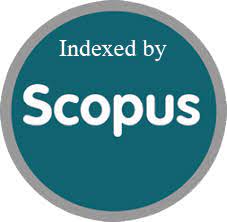Formulation And Assessment Of An Herbal Gel Containing Cymbopogon Citratus For Wound Healing
Keywords:
Cymbopogon citratus, Lemongrass, Herbal gel, Wound healing, Antioxidant activity, DPPH assay, Phytochemical screening, Topical formulation, Carbopol 940, Natural antimicrobialsAbstract
Wound healing is a complex physiological process that can be impaired by infections and inflammation. Conventional therapies often pose risks such as side effects and antimicrobial resistance. In this study, an herbal gel formulation containing Cymbopogon citratus (lemongrass) extract was developed and evaluated for its wound healing potential. The ethanolic extract of Cymbopogon citratus leaves was obtained using Soxhlet extraction and subjected to phytochemical screening, which confirmed the presence of alkaloids, flavonoids, tannins, terpenoids, saponins, and glycosides. Antioxidant activity was assessed by DPPH assay, showing significant radical scavenging potential with an IC₅₀ of 72.5 µg/mL. Three gel formulations containing 1%, 2%, and 3% extract were prepared using Carbopol 940 as the base. Evaluation parameters including pH, viscosity, spreadability, stability, and antimicrobial activity revealed that the 3% formulation demonstrated the best overall characteristics. The study concludes that Cymbopogon citratus gel holds promise as a natural, effective, and stable topical agent for wound healing applications.
Downloads
Metrics
References
Sayali S W and Bhavana D T. Formulation and development of herbal gel for wound healing. Int J Sci Res Arch. 2024;11(02):1654-1659.
The Open Medicinal Chemistry Journal. The role of herbal medicine in wound healing and regeneration. Open Med Chem J. 2023;17:1-10.
Singh JK, Nama N, Ancheria RK, Jain H. A review on starch-based hydrogel as a carrier of wound healing medicated product. Career Point International Journal of Research(CPIJR) 2022; 1(2): 247-275.
Journal of Applied Pharmaceutical Science. Formulation and evaluation of herbal gels: A review. J Appl Pharm Sci. 2023;13(8):45-50.
Phytotherapy Research. Herbal remedies in wound healing: Insights into mechanisms and clinical applications. Phytother Res. 2021;35(2):303-312.
Agarwal S, Verma R, Singh P. Formulation and evaluation of a topical gel containing Aloe vera for wound healing. J Pharm Sci Res. 2023;15(5):456-460.
Sharma P, Singh A, Joshi N. Development of a gel formulation containing Turmeric (Curcuma longa) for wound healing. Int J Pharm Sci Rev Res. 2022;73(3):125-130.
Patel H, Shah R, Patel S. Comparison of wound healing effects of herbal gel formulations including Neem (Azadirachta indica). J Herbal Med. 2021;10(2):121-128.
Verma S, Patel V, Kumar M. Review of herbal gel formulations for wound healing: Chamomile (Matricaria chamomilla) and its role. J Phytomed. 2020;12(4):200-208.
Singh R, Tiwari A, Mehta P. Investigating the wound healing potential of Gotu kola (Centella Asiatica) gel formulation. Phytother Res. 2019;33(2):212-218.
Rao G, Meena R, Agarwal V. Formulation of a Lavender (Lavandula angustifolia) extract gel for wound healing. J Cosmet Dermatol. 2018;17(6):1152-1158.
Kumar P, Mishra A, Jain S. Development and evaluation of honey-based gel for wound healing. J Appl Pharm Sci. 2017;7(4):60-65.
Gupta P, Sharma S, Verma R. Manuka honey gel for wound care: A study of its effects. Wound Med. 2016;17:112-118.
Shukla A, Singh R, Sharma P. Use of Green Tea (Camellia sinensis) gel in wound healing. J Nat Prod. 2015;78(4):587-593.
Mishra S, Mehta R, Sharma A. Formulation, and evaluation of Witch Hazel (Hamamelis virginiana) gel for wound healing. Int J Pharm Pharmacol. 2014;6(3):51-56.
Joshi V, Saini S, Gupta K. Calendula (Calendula officinalis) gel for wound healing. Indian J Pharm Sci. 2013;75(1):50-55.
Downloads
Published
How to Cite
Issue
Section
License

This work is licensed under a Creative Commons Attribution 4.0 International License.
You are free to:
- Share — copy and redistribute the material in any medium or format
- Adapt — remix, transform, and build upon the material for any purpose, even commercially.
Terms:
- Attribution — You must give appropriate credit, provide a link to the license, and indicate if changes were made. You may do so in any reasonable manner, but not in any way that suggests the licensor endorses you or your use.
- No additional restrictions — You may not apply legal terms or technological measures that legally restrict others from doing anything the license permits.






